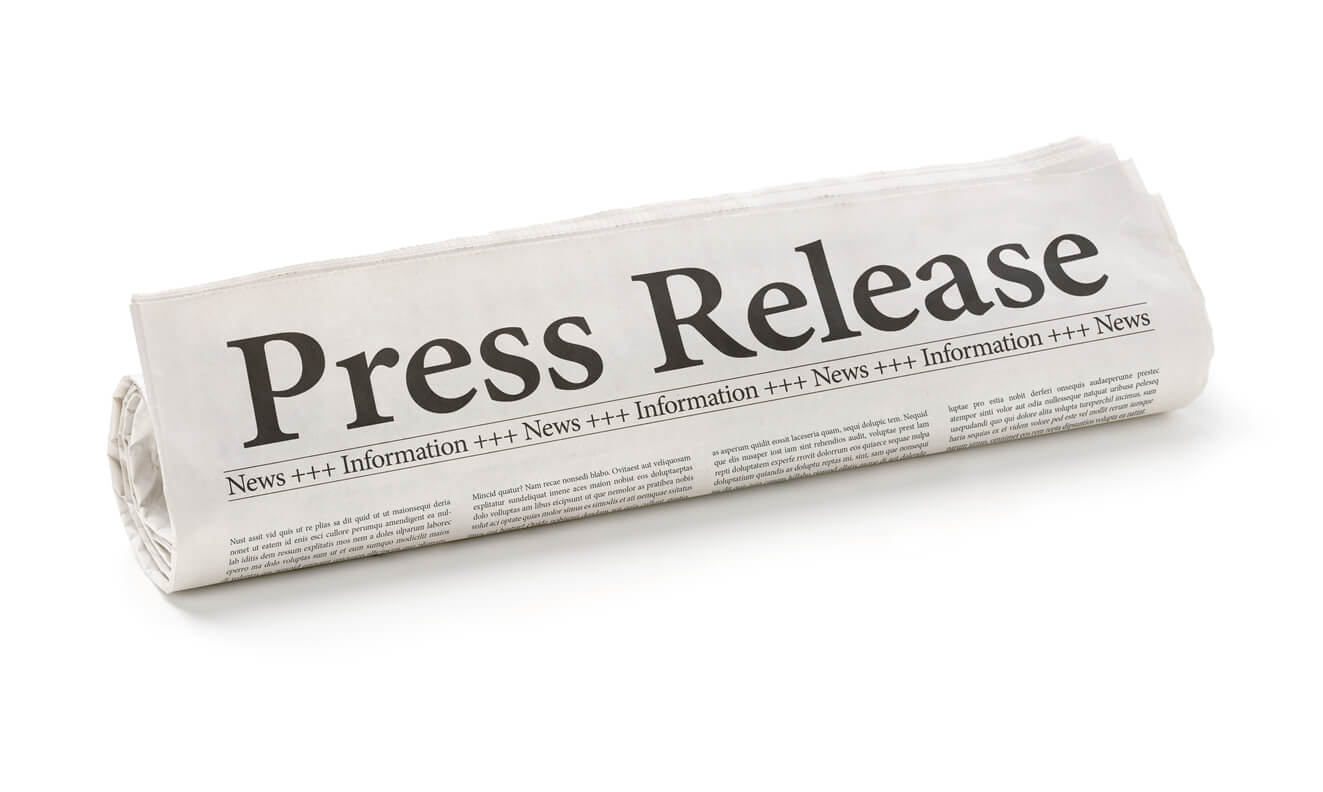What is a Press Release?

A press release, also known as a news release or media release, is a concise and professionally written document used to share newsworthy information about a company, organization, event, product, or development to the media, stakeholders, and the general public. Serving as an official announcement, it helps to shape the internal and external narrative of a company and brand by providing key information of its activities and evolution over time.
A vital part of public relations strategies, the press release acts as a bridge between businesses and the media. The aim is to gain the attention of journalists, bloggers, editors, and other members of the media, enticing them to cover the story and share it with their audiences. The structured format conveys important updates, achievements, or events in a clear and engaging way. By distributing press releases, companies can leverage the power of media coverage to enhance their brand visibility, credibility, and reach.
Key Components of a Press Release:
1. Headline: The headline is a concise and attention-grabbing statement that summarizes the main news or announcement. It should be informative and enticing, encouraging readers to continue reading.
2. Dateline: The dateline includes the release date and the location from which the press release originates. This provides context and establishes the timeliness of the news.
3. Introduction: The introduction, often referred to as the “lead,” presents the most essential information upfront in a clear way. It should answer the classic journalistic questions: who, what, when, where, why, and how.
4. Body: The body of the press release elaborates on the key points mentioned in the introduction, providing additional context, background information, quotes, statistics, and relevant facts.
5. Boilerplate: The boilerplate is a standardized paragraph that provides a brief overview of the company or organization issuing the press release. It includes essential information such as the company’s mission, history, products, services, and contact details.
6. Contact Information: This section includes the name, email address, and phone number of a designated media contact person – typically a public relations professional – who can provide additional information or answer inquiries from journalists.
7. Call-to-Action: It’s recommended to end the press release with a call-to-action, encouraging readers to take a specific action related to the news. This could include visiting a website, attending an event, or reaching out for more details.
Overall, a well-crafted press release is a strategic tool that helps companies connect with the media, share important information, establish leadership, and ultimately shape their narrative in the public eye. In the subsequent sections, we will delve deeper into the various aspects of writing an effective press release, including its format, structure, and essential guidelines.
Why Write a Press Release?

A press release is a valuable tool for businesses and organizations seeking to share significant news, milestones, or developments, quickly. It is a potent vehicle for delivering your message to a wider audience through media channels. Here’s why crafting a well-structured press release is a strategic decision that can yield substantial benefits:
1. Maximize Brand Visibility: A press release provides an opportunity to showcase your brand in front of a diverse audience. When media outlets pick up your story, it amplifies your message and introduces your brand to a larger segment of potential customers, partners, and stakeholders.
2. Build Credibility: Coverage in reputable media outlets lends credibility and legitimacy to your announcement and is considered earned media, which helps establish and grow credibility for your brand. Positive media attention portrays your company as a trusted source of valuable information and enhances your brand’s image.
3. Generate Media Interest: Journalists are always on the lookout for compelling stories to cover. A properly constructed press release with newsworthy content increases the chances that media professionals will find your story intriguing and choose to feature it.
4. Expand Audience Reach: Media coverage extends beyond your immediate network, allowing your message to reach a broader and geographically diverse audience. This exposure can lead to new customers, business partnerships, and increased brand recognition.
5. Share Company Milestones: Whether it’s a product launch, company anniversary, new partnership, or a significant achievement, a press release provides a structured platform to celebrate and share your milestones with the world.
6. Effective Crisis Management: In times of challenges or crisis, a press release allows you to control the narrative and provide accurate information to the media and the public. It helps in addressing concerns proactively and transparently.
7. Support Investor Relations: For publicly traded companies, press releases are an essential tool for communicating financial results, corporate updates, and other information that impacts investors’ decisions.
8. Affordable Marketing Tool: Compared to traditional advertising, press releases offer a cost-effective way to reach a larger audience. Many distribution services provide wide-reaching coverage at a fraction of the cost of paid advertising.
9. Engage Stakeholders: Press releases aren’t just for external audiences. They also keep internal stakeholders informed about key developments, fostering a sense of unity and shared purpose.
By crafting a compelling press release and strategically distributing it, you can harness the power of media coverage to propel your brand forward. The subsequent sections of this guide will delve into the intricacies of press release writing, offering practical insights on structure, content, and best practices to help you create impactful press releases that resonate with your target audience and garner media attention.
Types of Press Releases

Press releases come in various forms, each tailored to specific purposes and announcements. Understanding the different types of press releases can help you select the most suitable format for conveying your message effectively. Here are some common types of press releases:
1. Product Launch Press Release: Used to introduce a new product or service to the market. It highlights the features, benefits, and uniqueness of the offering, creating anticipation and excitement among the target audience.
2. Event Announcement Press Release: Used to promote upcoming events, such as conferences, workshops, seminars, fundraisers, or grand openings. It provides event details, objectives, and reasons why attendees should participate.
3. New Hire Press Release: Announces the addition of a new employee to your team, particularly when the individual holds a significant position or brings unique expertise to the organization.
4. Award or Recognition Press Release: Celebrates achievements, honors, or awards received by your company, employees, or products. It showcases your accomplishments and reinforces your industry standing.
5. Company Milestone Press Release: Marks significant company achievements, such as anniversaries, expansion, mergers, or rebranding efforts. It reflects growth and highlights your brand’s evolution.
6. Partnership Announcement Press Release: Shares news of strategic partnerships, collaborations, or alliances with other companies or organizations. It emphasizes the mutual benefits and objectives of the partnership.
7. Financial Results Press Release: For publicly traded companies, this type of press release discloses financial performance, earnings reports, and other essential financial information.
8. Crisis Management Press Release: Addresses issues, challenges, or crises that may affect your brand’s reputation. It communicates the steps you are taking to resolve the situation transparently.
9. Thought Leadership Press Release: Demonstrates industry expertise by sharing insights, research findings, or opinions on relevant topics. It positions your company as a knowledgeable leader in your field.
10. Charitable Initiatives Press Release: Highlights philanthropic efforts, donations, or community involvement. It showcases your brand’s commitment to social responsibility.
Tailoring your press release to its specific type ensures that you effectively communicate your news to the intended audience and achieve your desired outcomes. As we progress through this guide, we’ll provide you with comprehensive guidance on crafting press releases that align with your objectives and resonate with readers and media professionals alike.
How to Write a Press Release, Step-by-Step

Writing an effective press release requires careful planning, clear communication, and adherence to established guidelines. Follow these steps to craft a compelling press release that captures attention and delivers your message:
1. Understand Your Audience: Identify the target audience for your press release. Consider the interests, preferences, and needs of journalists, readers, and stakeholders who will engage with your news.
2. Define Your Objective: Clearly define the purpose of your press release. Are you announcing a new product, event, or milestone? Establishing this up front helps to guide your messaging.
3. Craft a Captivating Headline: Create a concise and engaging headline that succinctly summarizes the news. Use strong, descriptive language that grabs attention and entices readers to learn more.
4. Include the Dateline: All releases must include the date and location of your news. This provides context and timeliness for media professionals.
5. Compose the Introduction: Write a compelling lead paragraph that answers the essential questions: who, what, when, where, why, and how. Summarize the key news in a concise manner.
6. Develop the Body: Expand on the details of your news in the subsequent paragraphs. Provide relevant information, quotes from key stakeholders, and supporting facts.
7. Include Quotes: Incorporate quotes from company executives, experts, or relevant parties to add authenticity and humanize the story.
8. Add Background Information: Offer background context that helps readers understand the significance of the news. Provide relevant data, historical information, or industry insights.
9. Provide Boilerplate: Include a brief boilerplate paragraph about your company, outlining its mission, history, products, and services. This provides context for readers unfamiliar with your brand.
10. Offer Contact Information: Include contact details of a designated media contact person for further inquiries. Make sure the contact is available and responsive.
11. Conclude with a Call-to-Action: End the press release with a clear call-to-action that prompts readers to take a specific next step, such as visiting a website, attending an event, or reaching out for more information.
12. Review and Edit: Proofread your press release for grammar, spelling, and clarity. Ensure that the information is accurate and aligned with your objectives.
13. Format Correctly: Follow press release format guidelines, including font, spacing, and margins. Use a professional and easy-to-read font.
14. Include Visuals: Attach high-quality images or multimedia that enhance the story. Visual elements can make your press release more engaging and shareable.
15. Distribution: Once your press release is finalized, determine the appropriate distribution channels, including wire services, email outreach, and social media.
By following these steps, you can create a well-structured and impactful press release that effectively communicates your news and resonates with your target audience. In the subsequent sections, we’ll delve further into specific elements of press release writing, providing you with valuable insights and best practices to elevate your press release game.
What Makes a Good Press Release (Press Release Tips)
Crafting a compelling press release requires attention to detail and a strategic approach. Here are some key tips to ensure your press release stands out and effectively communicates your news:
1. Newsworthiness: Focus on sharing information that is genuinely newsworthy and relevant to your target audience. Media professionals are more likely to cover stories that have a significant impact or relevance.
2. Clear and Concise Language: Use clear, concise, and jargon-free language. Avoid overly technical terms that might confuse readers or dilute the impact of your message.
3. Strong Headline: Craft a headline that grabs attention and encapsulates the essence of your news. Use action verbs, intriguing statements, or a touch of curiosity to entice readers.
4. Inverted Pyramid: Structure your press release with the most important information at the beginning (who, what, when, where, why, how). This allows journalists to quickly grasp the key details.
5. Engaging Lead Paragraph: Your opening paragraph should succinctly summarize the news and compel readers to continue reading. It should encapsulate the core message in a compelling manner.
6. Quotes from Key Stakeholders: Incorporate quotes from company executives, experts, or relevant individuals. Quotes add credibility and provide a human element to your story.
7. Relevance to Audience: Tailor your press release to resonate with the interests and concerns of your target audience. Explain why the news matters to them.
8. Use Data and Statistics: Back your claims with relevant data, statistics, or research findings. Numbers can add depth and credibility to your announcement.
9. Visual Elements: Include high-quality images, infographics, or videos that enhance the visual appeal of your press release. Visuals can make your news more engaging and shareable.
10. Contact Information: Ensure your designated media contact person is readily available and responsive. Include accurate contact details for inquiries.
11. Proofreading: Thoroughly proofread your press release for grammar, spelling, and factual accuracy. Errors can undermine your credibility and professionalism.
12. Avoid Sales Language: While promoting your brand is essential, avoid overtly promotional language. Maintain an informative and objective tone.
13. Conciseness: Keep your press release concise, typically between 300 to 500 words. Journalists appreciate succinct information that gets to the point.
14. Consistent Branding: Maintain consistent branding elements, such as logos and color schemes, to reinforce your brand identity.
15. Targeted Distribution: Distribute your press release to relevant media outlets, journalists, and industry influencers who are likely to find your news interesting.
By following these press release tips, you can craft a well-structured and compelling press release that captures the attention of journalists, resonates with your audience, and generates meaningful media coverage. In the subsequent sections, we’ll delve into common mistakes to avoid when writing press releases and provide practical examples to illustrate effective press release techniques.
How to Issue a Press Release

Issuing a press release involves a strategic process of distribution to ensure your news reaches the intended audience and garners media coverage. Here’s a step-by-step guide on how to effectively issue a press release:
1. Refine Your Press Release: Before distribution, review and refine your press release to ensure accuracy, clarity, and newsworthiness. Proofread for any errors or inconsistencies.
2. Compile Media List: Create a list of media outlets, journalists, and influencers who cover topics relevant to your announcement. Include local, industry-specific, and national media sources.
3. Segment Your List: Categorize your media contacts based on their interests and coverage areas. Tailor your press release and pitch to each segment for a more personalized approach.
4. Choose Distribution Channels: Decide on the distribution channels for your press release. Options include newswire services, media outreach platforms, and your company’s website and social media channels.
5. Craft an Engaging Pitch: Write a concise and compelling pitch that introduces your press release to media contacts. Highlight the key points, relevance, and benefits of the news.
6. Send Personalized Pitches: Send personalized pitches to each media contact, addressing them by name and referencing their previous work or interests. Emphasize how your news aligns with their coverage.
7. Distribute via Newswires: If using a newswire service, follow their guidelines for submission. Include relevant keywords, tags, and multimedia assets to enhance visibility.
8. Publish on Your Website: Publish the press release on your company’s official website in a dedicated “Press Releases” or “News” section. Ensure the release is easily accessible to visitors.
9. Share on Social Media: Promote the press release on your social media platforms. Craft engaging posts with visuals and relevant hashtags to encourage sharing and engagement.
10. Monitor Media Coverage: Keep track of media coverage and mentions related to your press release. Respond promptly to any inquiries or requests for additional information.
11. Follow-up: Send follow-up emails to media contacts who showed interest in covering your news. Provide any requested supplementary information or arrange interviews.
12. Measure and Evaluate: After the press release has been distributed, analyze key metrics such as media coverage, website traffic, social media engagement, and audience reach.
By following these steps, you can effectively navigate the process of issuing a press release and maximize its impact. Remember that persistence and a well-targeted approach are key to securing media coverage and generating buzz around your news.
Conclusion: Crafting Effective Press Releases
A well-crafted press release remains an essential tool for sharing news, building brand recognition, and engaging with media professionals and your target audience. By understanding the fundamental components of a press release and following best practices, you have the power to create compelling narratives that resonate, inform, and captivate.
